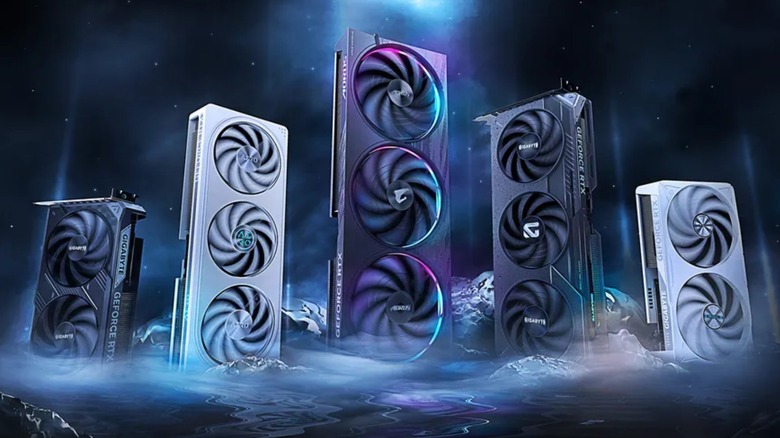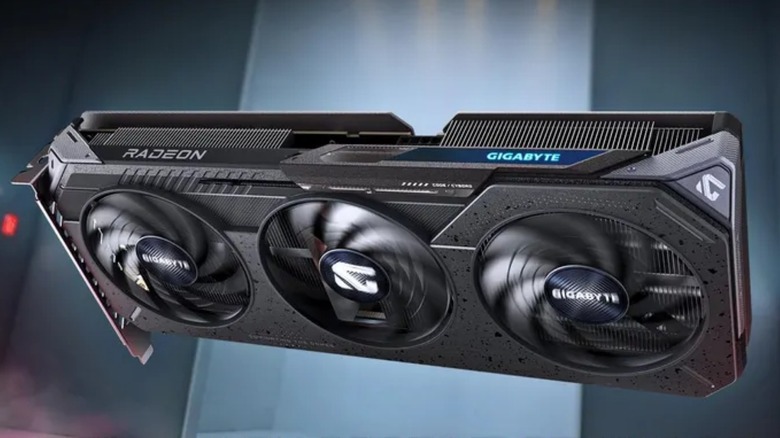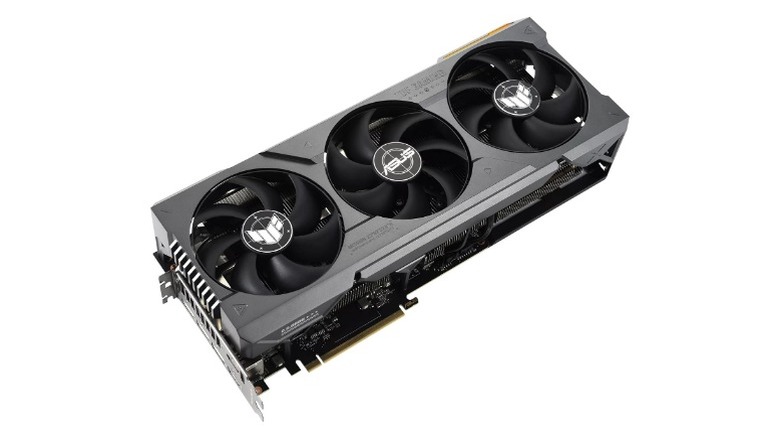Does GPU Boost Clock Speed Matter, And Is It Worth The Extra Money?
We may receive a commission on purchases made from links.
There are a lot of components to pick out when you're building a PC, but one of the most important elements of gaming and digital rendering tasks is the graphics card (GPU). There are multiple models on the market from Nvidia, AMD, and Intel with a wide range of specs. You may have noticed that each boasts different clock speeds and many of them also advertise a "Boost Clock Speed." Both base and boost clock speed are metrics measured in Megahertz (MHz) and Gigahertz (GHz) with the GPU's base clock speed being the default speed at which the card is able to process information without performance boosts.
This is the speed your GPU will consistently operate at when it isn't being pressed. Boost clock speed, on the other hand, refers to the maximum frequency that a GPU can reach above its base clock when it's under load. You shouldn't expect the graphics card to maintain this frequency indefinitely, even under the best circumstances. It's simply the top speed it can reach under optimal conditions without overclocking. Nvidia's GeForce RTX 5080, for example, has a base clock of 2.3 GHz, but it can boost to 2.62 GHz if it's undergoing more intensive tasks.
Clock frequency is dynamically managed by the computer, adjusting as needed based on the card's thermals and power usage. There are ways to see which GPU is in your PC and what its clock speeds are, which is useful information for certain buyers, but it won't matter much for others, and the differences in costs can be difficult to justify.
Does Boost Clock Speed matter?
A GPU's boost clock speed can weigh into purchasing decisions for certain GPU buyers, but it's only important in specific circumstances. Those simply building a PC to surf the internet, perform productivity tasks, and stream media probably don't need to worry about it. Those who plan on using their PC for gaming and creative endeavors, on the other hand, are another story. A higher boost clock speed can generate smoother framerates in video games, for instance.
If you've ever experienced a stutter on your screen while gaming when there are too many effects occurring, that's a case of the GPU's clock speed not keeping up with the game's demands. You can always lower your graphics settings to improve the GPU's performance, but a higher boost clock means there's more overhead for your GPU to ramp up when demands exceed the unit's base speed. This is partly why so many gamers choose to overclock their gaming PCs.
Creative workloads such as video editing and 3D modeling can also benefit from a higher boost clock speed. With a higher boost clock speed, scrubbing through a video timeline is smoother, providing an overall easier time creating content. Moreover, the rendering process for programs like Blender, Premier, and DaVinci Resolve can put a heavy load on the GPU, where a higher boost clock will assist with rendering faster, allowing creators to move on to their next project sooner.
Is the cost-to-performance worth it?
Boost clock speed has a definite impact on certain computing tasks, offering a particular advantage to gamers and content creators. That said, graphics card manufacturers have a tendency to charge a premium. So, the real question is whether or not the difference in performance merits the difference in price. Looking at Asus, one of the best major graphics card brands, its TUF Gaming RTX 4080 and its corresponding OC Edition.
The standard version has a base clock speed of 2,205 MHz and a boost speed of 2,505 MHz. It retails for $1,079.99 on Amazon. Compare that to the OC Edition, which has the same base clock but a boost speed of 2,595 MHz. It's currently going for $1,299.99 on Amazon. That's a $220 difference in price for a 4% increase in maximum speed that only occurs when the card is under extreme load. A similar pattern can be seen across other models and brands, as well. So, paying for a higher boost clock isn't very enticing from a value perspective.
Competitive gamers with big budgets might find the expense worthwhile for any small gains that could come in clutch in an esports match. Overclocking enthusiasts looking to hit the highest clock speeds they can might also find it worth the extra cash. But most people will be better off putting their money toward the next tier of GPU instead. Content creators in particular should put more focus into features such as VRAM, core count, and cooling solutions.


